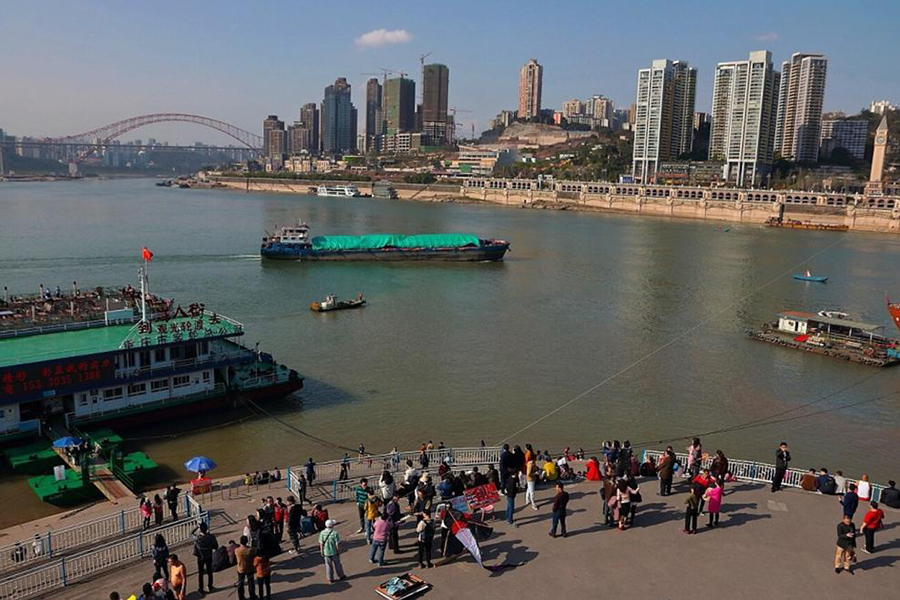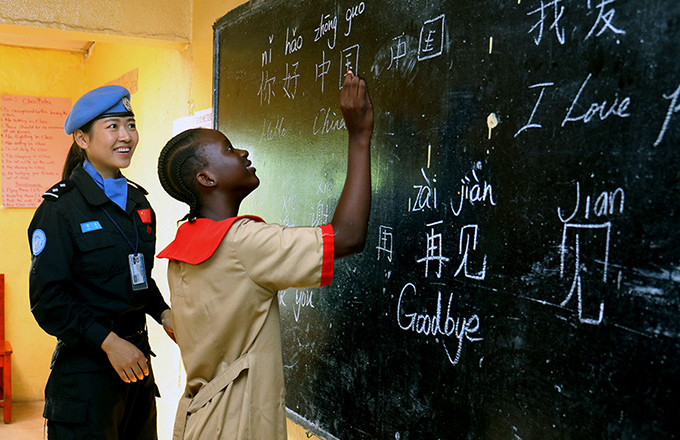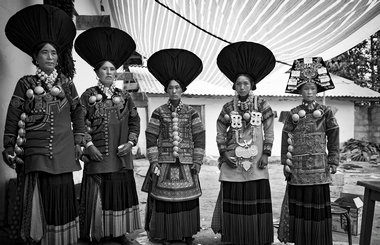The 'Long River' - a journey in time across middle China
 |
|
Chaotianmen Chongqing where Bruce arrived from Leshan and departed for Wuhan in 1994. [Photo provided to chinadaily.com.cn] |
For several hours our boat navigated a deep narrow canyon enclosed within high sandstone cliffs showing evidence of former cave habitation. Close to the river, farm workers walked in line towards compact red-stone villages. The boat was essential to life for the river people but there were no fixed piers due to seasonal variations in water levels. We would arrive at floating pontoons where villagers boarded with baskets of chickens strapped to their backs or sacks of vegetables suspended from bamboo shoulder poles.
At Yibin the scene changed dramatically. Factories lined the Yangtze River's banks - timber, cellulose, chemicals. The city was also renown for Wuliangye baijiu. Road and rail bridges spanned the waters alongside aerial cableways serving numerous factories. In the 1950s, industry had been relocated for strategic reasons from eastern cities to remoter inland provinces such as Sichuan.
Wooden fishing boats worked the now much wider river as we headed for an overnight stop at Luzhou. A chance to disembark, have cold drinks while looking over the waters flowing ultimately 6,300 km from source to the sea. I thought a lot that evening of the Yangtze River- Asia's longest river, third longest in the world and the longest to flow entirely within one country.
As dawn rose on another very sunny day we were underway initially passing villages clinging to limestone slopes, but increasingly urbanized landscape as we approached Chongqing and an arduous climb up a long staircase from a pontoon landing stage at Chaotianmen to the city.













